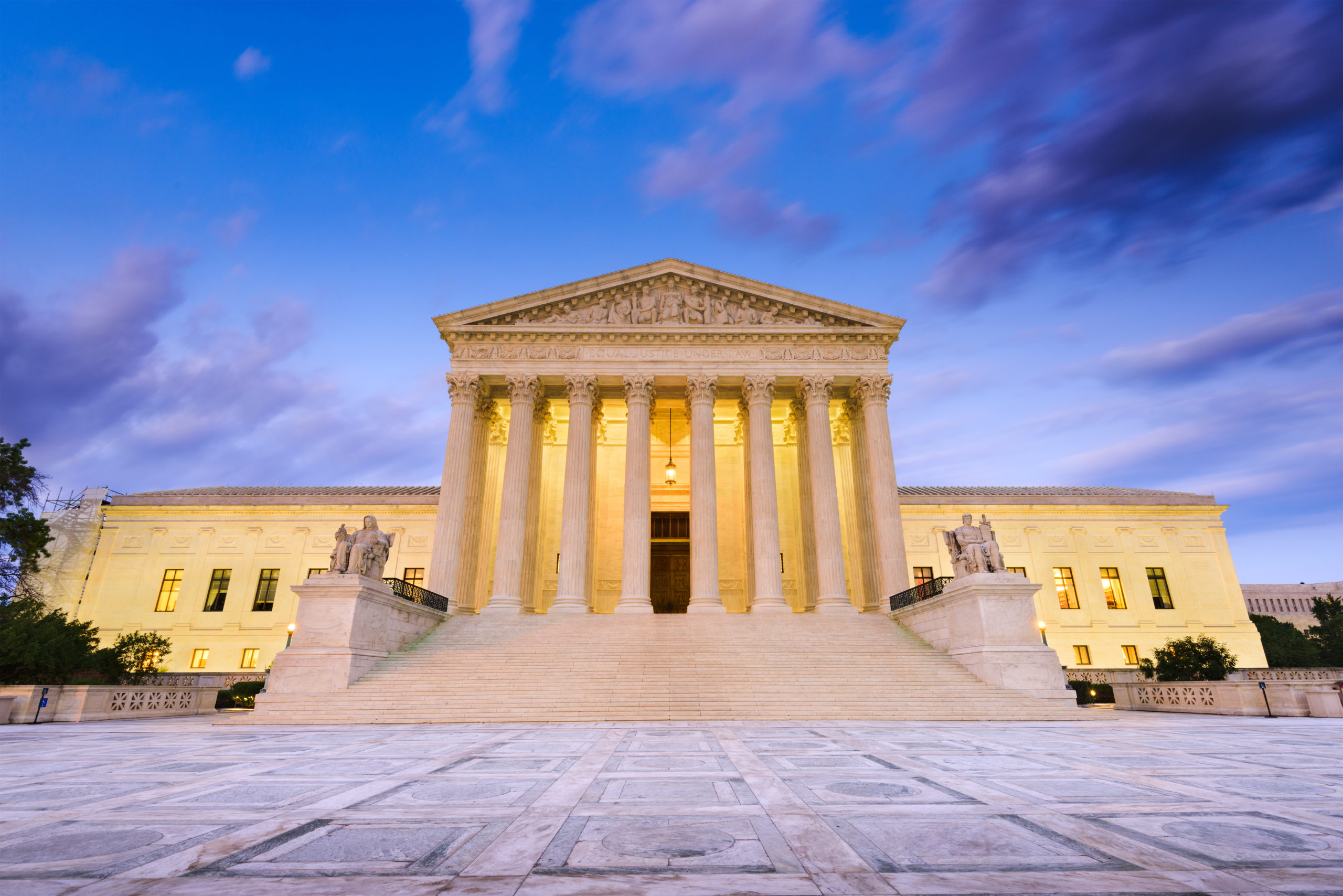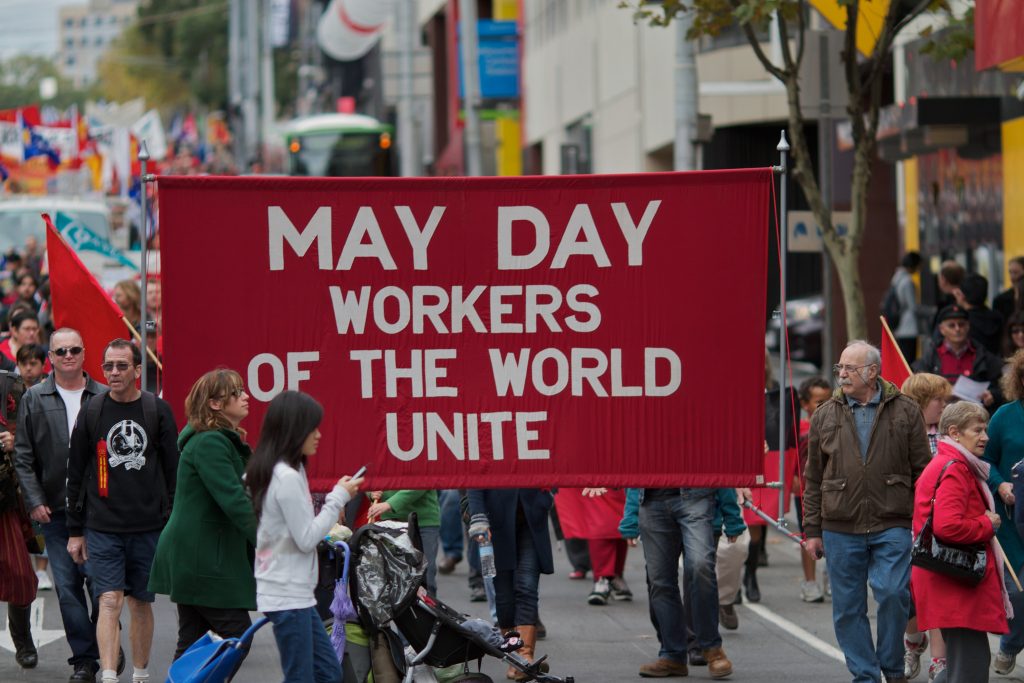Abortion rights, women of color, and LGBTQIA+ people are under attack. Pledge to join us in fighting for gender justice.
Reasons to Hold Onto Hope in the Three Recent LGBTQ Workers’ Rights Cases at the Supreme Court

Update: June 15, 2020 – Victory for LGBTQ and Women Workers
When I left home and headed to the U.S. Supreme Court early on the morning of October 8, 2019, I was excited to be in the courtroom during the oral arguments for three important LGBTQ workers’ rights cases. I knew that this moment resulted from the culmination of decades of work by so many attorneys and brave employees who brought these cases. When the woman working at the lobby where I waited for my ride asked what the cases were about, I explained and she responded, “Wait, don’t we have those rights already?” And yes, while in half of the country, including in the District of Columbia, LGBTQ workers do have state or local protections against workplace discrimination, everyone else must rely on our federal civil rights. And that’s the legal question at stake in these cases — whether our federal civil rights laws that say that sex discrimination is illegal at work will continue to protect LGBTQ workers.
The key argument on our side is that discriminating against workers based on sexual orientation or gender identity always includes discrimination based on sex. And discriminating based on sex is already illegal under existing federal laws. Some of the employers’ key arguments are that Congress could not have meant to protect LGTBQ workers when they passed the workplace civil rights law in 1964 and that only Congress can create “new” protections. To that we say, there are already many correct interpretations of sex discrimination from the U.S. Supreme Court that go beyond what many imagine to be the lawmakers’ original intentions, and the only task here is to interpret the actual words of the written law – and the law prohibits sex discrimination.
All nine Justices were present for the oral arguments. Based on what we know about their general approach, we should have four solid votes in favor of the workers from Justices Ginsberg, Breyer, Sotomayor, and Kagan. Justice Kagan summarized our central argument during the hearing as such:
For many years, the lodestar of this Court’s statutory interpretation has been the text of a statute, not the legislative history, and certainly not the subsequent legislative history… Did you discriminate against somebody, against her client, because of sex? Yes, you did. Because you fired the person because this was a man who loved other men. … This is the usual kind of way in which we interpret statutes now. We look to laws. We don’t look to predictions. We don’t look to desires. We don’t look to wishes. We look to laws. (Pages 59-60 of the Gerald Bostock/Donald Zarda transcript)
And so, the central question here is whether we can secure a fifth vote from one of the Justices in favor of the workers — thereby confirming once and for all that LGBTQ workers are included in the federal protections against workplace sex discrimination.
Justice Thomas did not say a word during the argument. Justice Kavanaugh asked only two questions in succession that did not lead to anything illuminating. Justice Alito was trying to find ways to somehow separate sex and sexual orientation and provided odd and impractical hypotheticals to try to get at that point. And Chief Justice Roberts asked questions of both sides but did not provide any clear insights as to his thinking.
However, Justice Gorsuch provided at least two openings to a possible fifth vote. First, he noted that under the framework of the civil rights law at issue, sex discrimination can’t be any part of the employer’s decision. So that means if the employer is discriminating based on both sex and sexual orientation, or based on sex and gender identity, the worker would be protected under federal law because the employer was illegally considering the employee’s sex as part of the employment decision. (Page 46 and 60 of the Gerald Bostock/Donald Zarda transcript)
Second, Justice Gorsuch said that when you look at the text, it’s a close question — and again, that seemed to be, a significant concession.
JUSTICE GORSUCH: –I’m with you on the textual evidence. It’s close, okay? We’re not talking about extra-textual stuff. We’re -we’re talking about the text. It’s close. The judge finds it very close. At the end of the day, should he or she take into consideration the massive social upheaval that would be entailed in such a decision… (Page 25 of the Aimee Stephens transcript)
Essentially Justice Gorsuch was laying plain that he would need to conclude that sex discrimination was completely unrelated to sexual orientation and gender identity to rule against the employees here — and frankly, that seemed to be an uphill battle, even for him. It was also fascinating to consider, when thinking of race discrimination or other kinds of civil rights protections if Justices would be so openly bold to say that they might need to rule for the harmed workers, in line with existing law, but they were hesitating because of possible social upheaval. Again, that’s not a legal question and indeed, courts do at times need to enforce civil rights with or without public support. However, it’s also important to note that there is no evidence that ruling for the workers in these cases would lead to any social upheaval given that in half the country explicit protections for LGBTQ individuals already exist.
Another point I wanted to highlight is that Justice Sotomayor also reminded everyone of the purpose of federal civil rights protections and concluded that the issues presented here fit within the existing laws that prohibit sex discrimination.
JUSTICE SOTOMAYOR: May — may I just ask, at what point does a court continue to permit invidious discrimination against groups that, where we have a difference of opinion, we believe the language of the statute is clear. I think Justice Breyer was right that Title VII, the Civil Rights Act, all of our acts were born from the desire to ensure that we treated people equally and not on the basis of invidious reasons…. At what point does a court say, Congress spoke about this, the original Congress who wrote this statute told us what they meant. They used clear words. And regardless of what others may have thought over time, it’s very clear that what’s happening fits those words. At what point do we say we have to step in? (Pages 58-59 of the Aimee Stephens transcript)
This was particularly important to me given that Justice Sotomayor had earlier in the morning asked questions oddly focused on transgender folks and bathrooms — even though these questions were not directly at issue in these cases. This was surprising and jarring and it is possible that she was naming what her colleagues were concerned about before they did, only to conclude that the Justices must follow the words of the law — and the law simply does not permit sex discrimination.
One of the most disturbing parts of the argument was witnessing how the Trump Government not only submitted papers on the side of the employers regarding their discrimination against LGBTQ workers but also took part in the argument on the side against the three workers. This was quite the about-face when you consider that one of the cases, the Aimee Stephens case concerning the transgender worker, was first brought by EEOC, a U.S. government federal agency and EEOC also represented her during the appeals at the Circuit level. In a few short years the tide has completely shifted when it comes to the U.S. Government’s stance as to LGBTQ rights in the workplace, healthcare, education and other contexts, and as we know, this is not because relevant laws have changed or because the legal precedents have changed.
In the end, we are hoping that the U.S. Supreme Court will confirm that nonconformity with an employer’s expectation about sex-based presentation or conduct simply cannot be an allowable reason to fire an employee — and this is of course very much a women’s right issue. This is so crucial for trans folks and for all who are gender nonconforming whether we are part of the LGBTQ community or not. While we may experience sex discrimination in varying ways and contexts that harm us as individuals in unique ways we are still collectively fighting against the same forces that deny us the right to authentically be ourselves. The hallmark of our nation’s civil rights workplace protections is that we are judged on whether we can do the job — and not based on whether we align with an employer’s notions about sex-based stereotypes concerning how we present ourselves or whom we love.
And now we will wait until next spring to learn if the Justices will abide by their duty to interpret the text as it’s written — to prohibit sex discrimination against all of us including LGBTQ workers. And if they fail to do so, then we will need the Senate to immediately pass the Equality Act to secure these rights in that way.
When I went to tuck in my 10-year-old daughter I told her that I spent the day at the U.S. Supreme Court, but I did not tell her what the case was about. I did not want her to go to bed afraid that her parents could be fired simply for who they are. And so I vaguely noted that the cases were about workers’ rights to be free from discrimination. My daughter only had two questions for me — first she asked if I had to see Justice Kavanaugh in the courtroom. And then she asked when she could finally meet two of her heroes from her children’s books — Justice Ruth Bader Ginsberg and Justice Sonia Sotomayor. Just as these women were able to reach their highest potential as U.S. Supreme Court Justices — a role once considered out of line with expectations for women, may we all have the freedom to be true to ourselves and to be protected by federal civil rights laws in the workplace and beyond.





